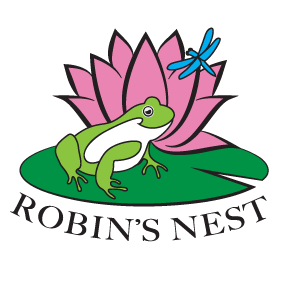Creating and maintaining a garden pond can be a delightful addition to your yard, offering a serene retreat and a habitat for various wildlife. At Natural Pools, we specialize in designing garden ponds that blend seamlessly with your landscape while using natural processes for maintenance. Here’s a guide on how to maintain your garden pond naturally, ensuring it remains healthy and vibrant throughout the year.
Understanding Natural Pond Ecosystems
A well-balanced garden pond functions much like a natural aquatic ecosystem. It involves plants, water, and microorganisms working together to create a self-sustaining environment. Key to this natural balance is the choice of plants and the design of the pond, which can eliminate the need for mechanical filtration systems.
Step-by-Step Guide to Natural Pond Maintenance
1. Choose the Right Location and Size:
Select a spot in your garden that receives a mix of sunlight and shade. Sunlight promotes plant growth, but too much can increase algae production. The size of your pond will depend on your space and the types of plants and animals you want to support.
2. Use Native Aquatic Plants:
Incorporate a variety of native aquatic plants that thrive in your local climate. These plants will naturally filter the water by absorbing nutrients and providing oxygen. Good choices include water lilies, cattails, and duckweed. These plants not only help maintain water quality but also provide shelter and food for wildlife.
3. Install a Natural Filtration System:
Instead of traditional filters, consider using a gravel bed or a small constructed wetland area at one end of the pond. These systems use biological filtration to filter out impurities and manage nutrient levels, which helps prevent algae blooms.
4. Stock with Beneficial Fauna:
Introducing fish that feed on algae, like certain types of carp, can help control algae growth. Snails and certain types of insects also contribute to cleaning the pond by eating dead plant material and other debris.
5. Perform Regular Maintenance:
Regularly remove any excess debris or dead plants to prevent decay, which can lead to nutrient overload and algae growth. Trimming plants back in the autumn can help keep the pond tidy and reduce the workload in the spring.
6. Monitor Water Quality:
Even natural ponds need monitoring. Keep an eye on water clarity and watch for signs of imbalance, such as sudden algae blooms or unhealthy plant life. Adjusting the plant types or quantities can often rectify these issues.
7. Winter Care:
In colder climates, consider how your pond will overwinter. Ponds that are too shallow can freeze completely, which can be fatal for aquatic life. Installing a small pond heater or aerator can keep part of the pond surface from freezing and allow gas exchange.
Benefits of a Naturally Maintained Garden Pond
Sustainability:
A naturally maintained pond reduces the need for chemical treatments and power-hungry filtration systems, making it an environmentally friendly option.
Wildlife Habitat:
A natural pond supports a richer biodiversity, providing a habitat for birds, insects, amphibians, and even small mammals.
Aesthetic Appeal:
Natural ponds can be designed to look like a seamless part of your landscape, adding to the overall beauty of your property.
Educational Value:
Maintaining a natural pond provides an excellent opportunity to learn more about ecology and the environment.
Enhance your Garden’s Natural Beauty
At Natural Pools, we believe that a garden pond is more than just a water feature; it’s a living ecosystem that enhances your garden’s natural beauty and supports local wildlife. By following these tips on natural maintenance, you can enjoy a healthy and beautiful pond with minimal environmental impact.
For more insights and assistance in creating your own natural garden pond, contact Natural Pools and explore our range of services and solutions tailored to your landscaping needs.

